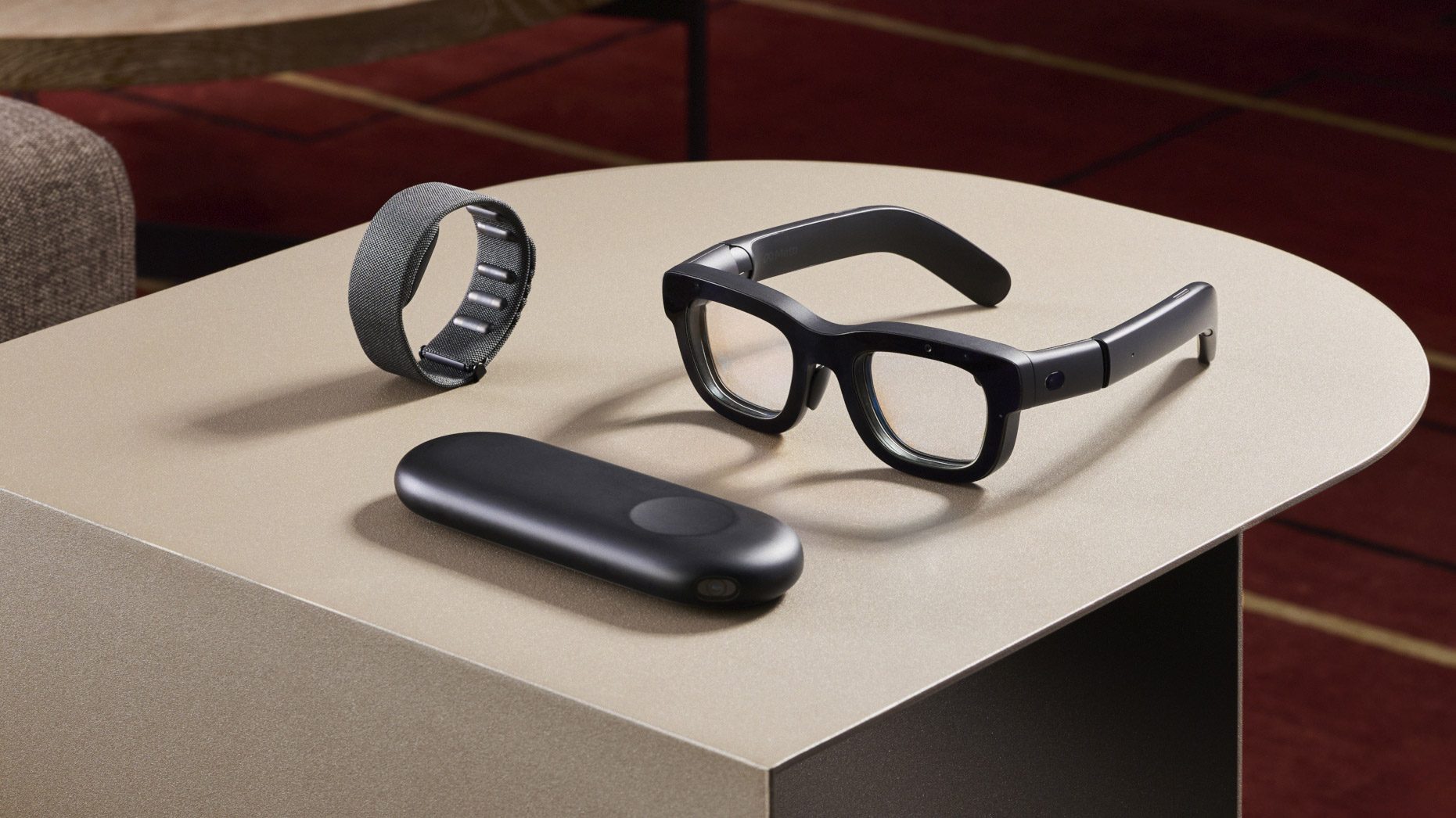Meta announced in 2020 it was working with UK-based AR display maker Plessey, which was tapped to provide Meta with AR displays over the course of multiple years. Now the companies have announced they’ve developed what they’re deeming “the world’s brightest” red microLED display for AR glasses.
Plessey and Meta say the new red microLED display offers brightness up to 6,000,000 nits at high resolution (<5um) with ultra-low power consumption, something they hope will overcome technical challenges in building all-day AR glasses, which require small, bright and energy-efficient displays that remain visible under direct sunlight.
Blue GaN microLEDs are traditionally more efficient and brighter, while green GaN microLEDs are slightly less efficient than blue, but typically much more efficient than red. All three should be balanced to create a full-color, high-performance AR display, making red color output a limiting factor.
“With the world’s brightest red microLED display, we are one major step closer to making AR glasses a mainstream reality,” says Dr. Keith Strickland, CEO of Plessey, who calls it “a major breakthrough in the development of AR technology.”

“We are building the future of human connection and the technology that makes it possible,” says Jason Hartlove, Vice President of Display and Optics at Meta’s Reality Labs. “These types of breakthroughs are crucial to build AR glasses that help people stay more present and empowered in the world with a form factor people actually feel comfortable wearing. Our work with Plessey has pushed the boundaries of what’s previously been possible, and it’s only the beginning–the future is starting to look up.”
As part of its long-term commercial agreement, Plessey says it’s continuing to work with Meta by dedicating its manufacturing operations to support the development of prototypes and new technologies for potential use in the XR category.
This follows the unveiling of Meta’s AR glasses prototype Orion last September, which includes a purported 70 degree field-of-view, silicon carbide waveguides, custom silicon, microLED projectors, wrist-worn electromyography (EMG) band used for hand-tracking, and external wireless compute unit that slips into your pocket.
Although Meta isn’t commercializing Orion, following its unveiling at Connect 2024 Meta CTO and Reality Labs chief Andrew Bosworth said the company will make its AR consumer tech available sometime before 2030, noting that the company aims to make them “affordable and accessible at least in the space of phone, laptop territory.”







